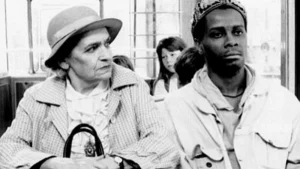
Moral Dilemmas in the Contemporary World
Every day, our children face many questions that need to be answered, situations that need to be addressed. This can be especially challenging when it comes to complex or confusing subjects or moral choices. Parents can help children find the right solutions. In this section we provide some examples of how to discuss moral dilemmas.
Activity 1.1: Fair personal, interpersonal & social decisions
 Parents / grandparents can take the opportunity to discuss more complex issues while/after watching a film (documentary, animation or play film). The choice of film depends on the child's age, hobbies and specific situation.
Parents / grandparents can take the opportunity to discuss more complex issues while/after watching a film (documentary, animation or play film). The choice of film depends on the child's age, hobbies and specific situation.
We provide guidelines on how to discuss the topic of making responsible choices with support of the short movie “Schwarzfahrer”/ “Black rider”, by Pepe Danquart.
We also suggest watching a mini-short story from the cycle "All the Invisible Children", such well known films as “Babel”, “Hotel Rwanda”, “The Firm” and similar, that create a space for discussions about personal, interpersonal and social responsibility, fair decisions.
Age range: From 12 years on
Download the English version: Fair personal, interpersonal & social decisions
Activity 1.2: Society of appearence/image
Our society is often said to be appearance or image based. Many people struggle in their attempts to satisfy certain physical or behavioural standards set by society . People are afraid to stand out from the crowd, seeking recognition. Children and teens are among the most vulnerable groups.
Parents/grandparents can help their children to understand the true meaning of the proverb “don’t judge a book by its cover”. They can use different positive examples, to show that a person’s appearance does not make them ‘better’ or ‘worse’ than anyone else.
In this section we provide an example of how to discuss the issue of image and appearance with younger school age children.
Parents / grandparents are encouraged to discuss this topic while reading stories together at any convenient time (not only at bedtime)
We provide guidelines on how to discuss the topic with support of the short story “Black sheep”, by Bruno Ferrero.
Age range: 6 - 10 years old
Download the English version: Society of appearence/image
Activity 1.3: Role model promoted by digital culture
We are all influenced by the digital culture that we are a part of. From early childhood, children observe people (including parents) engaged in different activities using digital devices. Adults, therefore, become digital role models for our children. If digital media takes up most of our time, it distances us from our children and harms our relationships. Children will also start to imitate adults’ behaviour. Children may distance themselves not only from their own parents, but also from their peers.
As a part of the wider culture, digital culture can be nurtured in a meaningful way in family life. Digital content and communication can be used to bring together different generations, rather than divide them. It can provide great material for discussions about both positive and negative things that impact on our own thoughts, decisions and behaviours. Parents (grandparents) can discuss different hot topics – stereotyping, bullying, commercialization, manipulation, etc. In this section we provide an example on how to talk about the benefits and harm of advertisements.
Description of the activity: Advertisements are everywhere and demand the attention of even the youngest of children. They can shape children's opinions, habits and choices. Here’s an example to illustrate how to discuss the meaning of an advertisement and what it does effect.
Age range: From kindergarten to upper secondary school.
Download the English version: Role model promoted by digital culture
